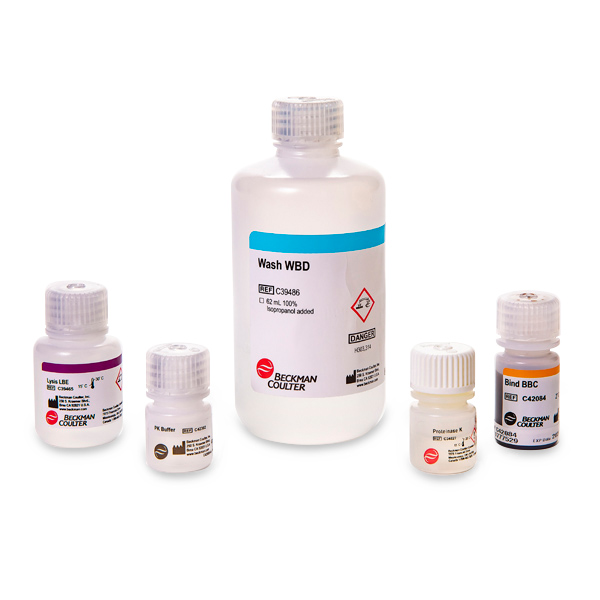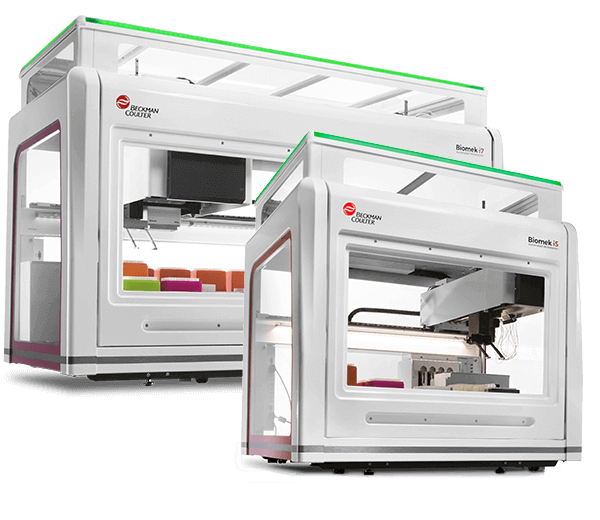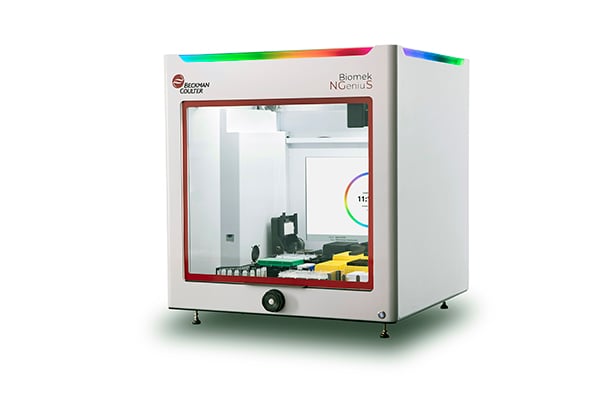基因组工作流在下一代测序(NGS)领域存在显著差异,主要因测序类型、通量需求和应用目的而异。因此,根据您的实验室和项目实际需求量身定制工作流至关重要。本文中,高级基因组应用专家 Momin Shah 将与您探讨制定个性化基因组工作流时需考虑的关键要素,并介绍贝克曼库尔特生命科学如何为您提供专业支持。
NGS 中 DNA/RNA 提取流程优化
近年来,NGS 技术给基因组学和临床研究带来了突破性变革。这些先进的工具为探索遗传多样性、宏基因组学以及表观遗传学领域开辟了全新的研究路径。
从微生物组分析到进化生物学,广泛的应用需求强调了定制化 DNA 或 RNA 提取方案的重要性,以确保每个项目的独特需求得以充分满足。例如, DNA 提取方案可能需遵循特定的时间框架和样品处理总量目标;而核酸的分离和纯化方案则需具备灵活性,以便根据项目工作的进展按需适时调整。
工作流的具体步骤也可能因所处理的样品类型而异。例如,针对组织样品的RNA提取方案,通常涉及经优化的匀浆和裂解步骤,这可能需要额外的硬件设备来实现必要的振荡和孵育过程。

图 1. NGS 工作流示例
无论项目的具体需求如何,设计高效的DNA、RNA 分离纯化工作流,或是两者并行的工作流,均需先明确样品类型及其保存状态,如 FFPE、储存缓冲液、温度等。同时,还需明确实验批次的规模、通量需求、下游应用以及研究的最终目标。
在新项目启动时,与经验丰富的 NGS仪器和试剂供应商携手合作,让您的核酸提取方案在项目初期便能得到优化,进而显著节省时间和成本。
如何定制 NGS 工作流?
综上所述,了解项目的具体要求对于优化任何工作流均至关重要。同样,对于 NGS 工作流,选择契合实验室需求的仪器、试剂和耗材同样至为关键。在设计优化工作流时,应仔细考量以下关键参数:
测序运行规模
样本数量、每个样本所需测序的基因或检测 Panel 数量(采用扩增子或靶标捕获工作流时)、周转时间以及项目时间表本身,均是决定测序运行规模的关键要素。
不同规模的基因组项目对工作流程的需求截然不同:在处理旨在为多个全基因组构建基因组DNA 文库的大型项目时,高通量全流程解决方案更为重要。相反,对于仅专注于特定基因研究,且不希望承担构建基因组文库所带来的负担或成本的研究人员而言,他们的通量需求相对较低,因此采用精简型定制测序方案,有效降低成本会更为合适。为满足多样化需求,应慎重选择整个工作流中的硬件、耗材和试剂。
工作流中的硬件要求
多数基因组方案在制备样品时,需专门的硬件工具来操纵 DNA 或 RNA。例如,广泛应用于 DNA/RNA 分离、PCR 纯化和片段筛选的磁珠分离技术,需使用与样品实验室耗材规格兼容的磁力架或磁力板进行设置。
此外,热循环仪、Peltier 设备和板振荡器等设备也很常见。还有多种 DNA 纯化方案——从基于溶液的化学试剂到离子交换柱——每种方案都有自己的实验室器皿和硬件要求。提取或 NGS 文库制备中使用的许多试剂也需要恒温或低温保存,因此在为工作流程设计系统时,包括加热/冷却装置非常重要。
核酸提取和 NGS文库制备 之后的下游工作也将有其自己的硬件需求,例如用于定量的 qPCR 和/或测序设备。
耗材
为定制符合现有实验室实践的工作流程,需掌握实验室耗材规格、样品容器容量、试剂体积(试剂盒规格)、试剂容器类型及所需产出样品量等关键信息。同时,确保这些耗材的库存充足对于减少系统停机时间、实现按预定时间表处理样品所需的通量至关重要。
文库制备试剂盒
供应商需证实其能在规定时间内足量供应试剂盒。例如,相较于年处理量仅为6,000个样本的实验室,年处理量预计达100,000个样本的实验室对物流规划的要求更为严苛。此举旨在确保提前采购,从而预留充足的运输时间。
自动化
在基因组工作流程中引入自动化可显著减少人工干预并提高运行效率。与提供高度适应性和开放平台技术的供应商合作,可以定制仪器方案以满足特定的科学需求。此外,供应商必须确定所需的自动化程度——是半自动化系统还是全自动无人值守解决方案。完整的自动化方案支持多设备/协议集成,并可升级为生产级工作流:实现微孔板自动接收、处理及传递至下游环节的全程无人化操作。

图 2. 科学家工作站示例
如何为自动化 NGS 工作流程定制软件?
在确定适当的仪器配置和自动化水平后,开发用于研究人员便捷地输入特定的运行要求的用户操作界面至关重要。该界面有助于仪器计算基本参数,包括每个样品的最低进样量、初始基因扩增所需的试剂体积以及混样策略等。为了实现深度定制化,系统采用JavaScript等各种脚本语言,通过对话框、输入选项卡、功能按钮、文本字段、复选框和表格组成的定制用户界面,确保与预设工作流程精确匹配。
贝克曼库尔特生命科学应用支持
在基因组研究领域,可靠的技术支持对于优化和持续调整提取和 NGS 工作流程以应对不断变化的需求至关重要。贝克曼库尔特生命科学的应用支持团队擅长帮助科学家识别和实施最适合其当前和未来需求的解决方案。通过提供有关仪器和硬件的专家指导以及定制程序,我们的团队使研究人员能够熟练应对 NGS 工作流程中的复杂挑战,从而确保他们在整个科学工作中的信心。
作者简介

Momin Shah, 目前担任贝克曼库尔特生命科学公司的高级基因组应用专家,拥有基因组学和分子生物学的深厚背景及超 12 年的行业经验。他专注于为基因组学实验室工作流程提供先进的应用专业知识,特别是在液体处理自动化方面。Momin 与研究人员和专家紧密合作,推动工作流程实施,解决样本质量问题,并提供贝克曼库尔特基因组学产品的全方位培训。他的目标是助力客户加速科学与医疗保健领域的进步。
相关产品
Not intended or validated for use in the diagnosis of disease or other conditions.
© Beckman Coulter, Inc. All rights reserved. Beckman Coulter, the Stylized Logo, and Beckman Coulter product and service marks mentioned herein, including Biomek and and Biomek NGeniuS, are trademarks or registered trademarks of Beckman Coulter, Inc. in the United States and other countries. All other product names and brands are properties of their respective owners.








